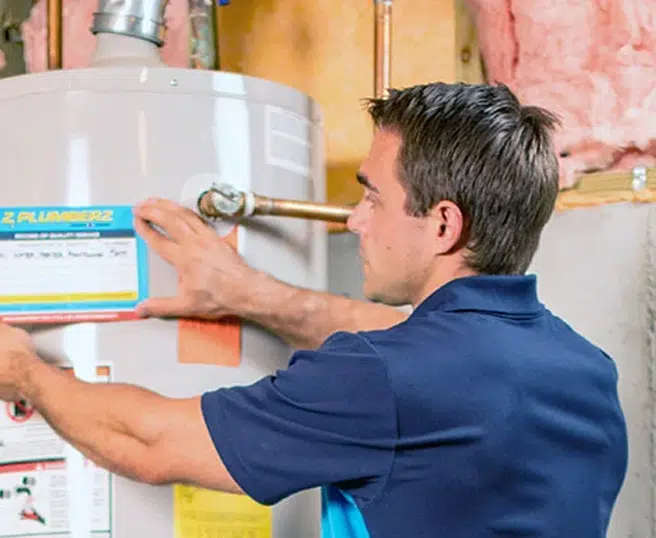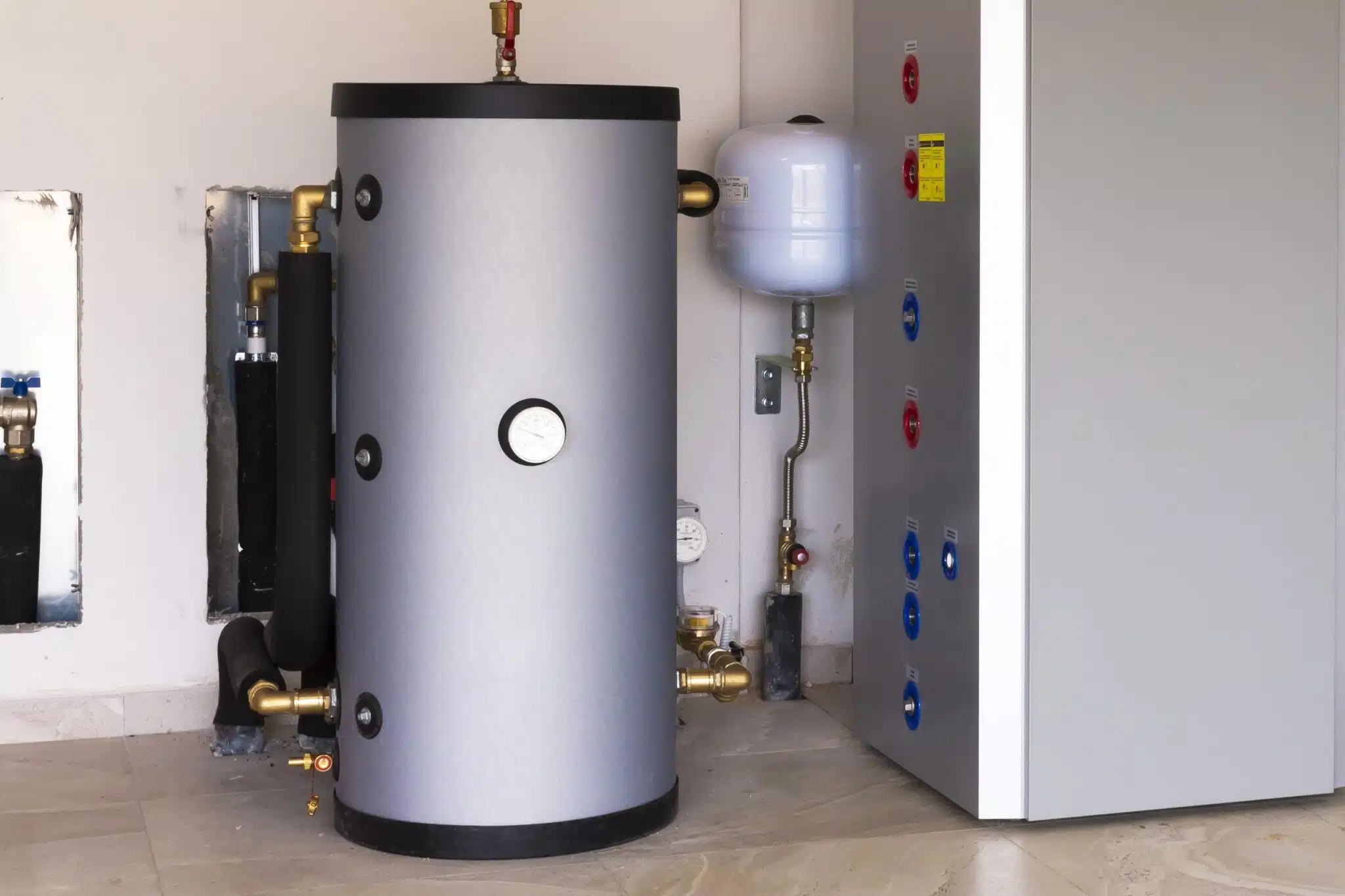Filtration efficiency is a cornerstone of performance in industries like water treatment, pharmaceuticals, and manufacturing. It safeguards product integrity, ensures compliance with safety standards, and prolongs equipment life. Achieving consistent filtration results, however, depends on understanding and managing several key factors.
Among these, water temperature exerts a unique influence. It alters fluid viscosity, affects the movement of particles, and even changes the physical properties of filter media. These shifts can dramatically impact a system’s ability to filter contaminants effectively. Exploring how water temperature interacts with filtration efficiency is essential for maintaining high performance in diverse environments.

Understanding Filtration Efficiency
Filtration efficiency is the measure of how effectively a filtration system removes contaminants from liquids or gases. This metric is essential for industries where precision and purity are non-negotiable, such as water treatment, pharmaceuticals, and food processing. A highly efficient filtration system not only enhances product quality but also reduces maintenance costs, extends equipment life, and ensures compliance with strict regulatory standards. It is the foundation of operational success in environments where even microscopic particles can cause significant issues.
Assessing filtration efficiency requires advanced techniques to gauge a filter’s performance accurately. Beta ratios are one widely used method, comparing particle counts upstream and downstream to calculate a filter’s effectiveness. This approach provides a clear snapshot of how well a system retains contaminants of varying sizes. Another key technique is particle counting, which uses sophisticated tools to identify and measure particle sizes and concentrations within the filtration process. These methods help businesses monitor system performance, identify potential weaknesses, and make data-driven decisions to optimize operations.
The importance of filtration efficiency extends beyond individual systems. It safeguards public health, ensures product reliability, and enhances sustainability efforts. Understanding and improving this critical metric is a strategic investment that delivers tangible benefits across industries.
Mechanisms of Filtration
Filtration systems rely on three fundamental mechanisms—interception, impaction, and diffusion—to remove particles efficiently and ensure clean outputs. These processes work together to optimize filtration efficiency across a wide range of particle sizes, making them indispensable in industries like water treatment, pharmaceuticals, and food production.
Interception occurs when particles flowing through a system come into direct contact with filter fibers. As the particles travel along the fluid path, they are captured by the filter material due to their size and trajectory. This mechanism is especially effective for larger particles that cannot navigate the filter’s structure.
Impaction targets particles with higher inertia. When fluid flows through the filter, these larger particles are unable to change direction with the stream and collide directly with the filter fibers. This mechanism works best for medium-to-large particles in systems where flow rates are higher.
Diffusion, the third mechanism, is critical for capturing the smallest particles. These particles move erratically due to Brownian motion, colliding randomly with filter fibers. Diffusion operates most effectively at lower flow rates and is key to removing microscopic contaminants that other mechanisms may miss.
The effectiveness of these mechanisms depends on the design of the filtration system, the properties of the filter media, and the operating conditions. Together, interception, impaction, and diffusion form a comprehensive filtration strategy, ensuring high filtration efficiency across diverse applications and environments.
Role of Water Temperature in Filtration
Water temperature plays a pivotal role in the functionality of filtration systems. Its effects on fluid viscosity, particle dynamics, and filter media performance highlight the complexity of achieving optimal filtration efficiency under varying conditions. These effects can be examined through three key areas:
Effects on Fluid Viscosity and Flow Rates
Water viscosity directly correlates with temperature. Warmer water has a lower viscosity, which allows it to flow more easily through filtration systems. This increase in flow rate can speed up processes but often reduces the system’s ability to trap smaller particles effectively. Conversely, colder water thickens, slowing the flow rate and improving particle retention. However, this increased resistance can place additional stress on pumps and filtration equipment, potentially lowering overall operational efficiency. Striking a balance between flow rate and viscosity is essential for consistent results.
Impact on Particle Behavior
Temperature changes also influence the movement of particles within a liquid. In warmer conditions, particles become more dynamic, moving at higher velocities and increasing the risk of bypassing the filter. In contrast, colder temperatures stabilize particle movement, making them easier to capture. However, the slower flow associated with cold water can challenge the filtration system’s capacity to maintain efficiency. Adapting systems to manage these variations is critical for optimal performance.
Effects on Filter Media Performance
Temperature fluctuations can significantly impact the structural integrity of filter materials. High temperatures may cause some filter media to soften or warp, diminishing their capacity to trap contaminants effectively. Conversely, extreme cold can make certain materials brittle, increasing the likelihood of breakage or reduced longevity. Selecting temperature-resistant materials and monitoring operating conditions are crucial for maintaining reliable filtration efficiency.
Understanding and managing these interactions between water temperature and filtration processes is key to achieving sustainable and reliable system performance in any industry.
Temperature Effects on Filter Media
Temperature variations can significantly impact the properties and performance of filter media, directly influencing filtration efficiency and system reliability. Understanding how temperature changes affect filtration materials is crucial for industries operating in diverse environmental or processing conditions.
Changes in Filter Media Properties
Filter media are engineered to function optimally within specific temperature ranges, but deviations from these ranges can alter their properties. At elevated temperatures, synthetic and polymer-based materials may soften or lose structural integrity, leading to enlarged pores or diminished particle capture efficiency. These changes can allow contaminants to bypass the filter, reducing its effectiveness. In cold conditions, certain filter materials can become rigid, compromising their flexibility and ability to maintain a secure seal. This rigidity can lead to leaks or inefficiencies in high-pressure systems, further complicating operations.
Potential for Deformation and Degradation
Extreme temperatures amplify the risks of mechanical deformation and material degradation. Prolonged exposure to heat can cause some filter media to warp, melt, or experience chemical breakdown, resulting in a loss of filtration efficiency. For example, polymers frequently used in industrial filters can degrade under high heat, reducing their lifespan and effectiveness. Conversely, freezing temperatures can make filter media brittle and susceptible to cracking or breaking, especially under dynamic pressures. Such damage not only shortens the filter’s operational life but also increases the risk of system failure and contamination.
Mitigating Temperature Effects
To combat these challenges, industries must select filter media designed to withstand the temperature extremes of their processes. Advanced materials, such as high-temperature-resistant polymers or metal filters, provide enhanced durability in demanding conditions. Regular monitoring of operational temperatures, along with proactive maintenance and replacement schedules, ensures filtration systems remain efficient and reliable even under fluctuating conditions.
Addressing temperature-related issues is a vital step in preserving filtration efficiency and safeguarding critical operations across diverse industrial environments.
Temperature Challenges and Adaptive Strategies in Filtration Systems
Temperature fluctuations present significant hurdles for filtration systems, influencing their efficiency, durability, and long-term reliability. In industries like water treatment and pharmaceuticals, maintaining consistent filtration efficiency requires tackling these challenges head-on with innovative strategies.
Key Challenges of Temperature Variations
Extreme temperatures, whether high or low, disrupt the physical properties of filter media. At elevated temperatures, synthetic materials may soften or lose shape, resulting in compromised pore structure and reduced particle capture. This degradation often leads to inefficiencies and higher operational costs. Conversely, in colder conditions, filter media can become brittle, increasing the likelihood of cracks or mechanical failure under pressure. These challenges are especially problematic in applications where temperature changes occur frequently, placing a strain on system components.
Industry-Specific Temperature Impacts
Temperature effects manifest differently across industries. Municipal water treatment facilities must adapt filtration systems to cope with seasonal variations in water temperature, which can alter the viscosity and flow rate of fluids. In the pharmaceutical sector, filtration systems face high-heat challenges during sterilization processes, where maintaining filtration efficiency is critical for regulatory compliance. Similarly, industrial manufacturing processes often operate in environments with fluctuating temperatures, creating additional stress on filtration equipment.
Adaptive Strategies for Enhanced Filtration Performance
Industries combat these challenges with specialized materials and advanced technologies. High-temperature-resistant polymers and metal-based filter media are increasingly used for their durability in extreme conditions. Automated temperature control systems allow for real-time adjustments, optimizing flow rates and minimizing temperature-induced inefficiencies. Preventive maintenance programs, combined with detailed temperature monitoring, help to identify and address issues before they escalate. These proactive measures not only maintain high filtration efficiency but also extend the lifespan of filtration systems.
By embracing adaptive strategies and leveraging technology, industries can overcome temperature challenges and ensure filtration efficiency remains uncompromised, even under extreme environmental or operational conditions.
Best Practices for Managing Temperature in Filtration Processes
Effectively managing temperature in filtration processes is vital for maintaining filtration efficiency and ensuring the longevity of filtration systems. Temperature variations can significantly impact fluid properties, particle dynamics, and filter media performance, making proactive management strategies essential. Below are the best practices to tackle temperature-related challenges.
Choose Temperature-Resilient Filter Media
Selecting the appropriate filter media is a fundamental step. Materials engineered to resist high temperatures, such as metal alloys or high-performance polymers, maintain structural integrity even under extreme conditions. For colder environments, flexible and durable filters are essential to prevent brittleness and cracking. Tailoring filter materials to specific temperature ranges ensures consistent filtration efficiency in diverse operating environments.
Leverage Advanced Temperature Monitoring Systems
Real-time temperature monitoring allows operators to detect fluctuations instantly and adjust system parameters proactively. Integrated sensors and automated controls help maintain the desired temperature range, reducing the risk of inefficiencies. These systems also provide data insights, enabling long-term process optimization and preventing costly breakdowns caused by unnoticed temperature shifts.
Incorporate Temperature-Stabilizing Design Features
Proper system design is crucial for managing temperature impacts. Components like heat exchangers, insulated pipes, and cooling jackets stabilize fluid temperatures before they reach the filter media. These design elements prevent rapid temperature swings, ensuring that the filtration system operates within its optimal range at all times.
Perform Routine Maintenance and Inspections
Regular maintenance is critical for identifying and mitigating temperature-related wear and tear. Inspecting filter media for deformation, brittleness, or other signs of stress ensures systems remain operational. Early filter replacement based on wear patterns helps avoid system failures and downtime, preserving filtration efficiency.
Educate Teams on Temperature Management
Well-trained personnel are the backbone of successful temperature management. Providing hands-on training on monitoring systems, troubleshooting techniques, and best practices empowers teams to make informed decisions and respond swiftly to temperature-related issues.
Implementing these strategies allows industries to safeguard their filtration systems against temperature fluctuations, enhance operational reliability, and maintain consistent filtration efficiency under even the most challenging conditions.
Seasonal Considerations in Clarkston, MI
Michigan’s seasonal temperature swings create unique challenges for filtration systems in Clarkston, where industries must contend with significant variations in water conditions throughout the year. These changes can impact filtration efficiency, making proactive adaptation essential to maintaining system reliability and operational continuity.
-
Seasonal Temperature Impacts on Filtration Systems
During Clarkston’s hot summers, higher water temperatures lower fluid viscosity, increasing flow rates. While this may boost system throughput, it reduces the filtration system’s ability to trap smaller particles effectively. On the other hand, the cold winters of Michigan bring increased water viscosity, slowing flow rates and placing additional strain on pumps and filter media. Prolonged exposure to freezing conditions can also lead to filter damage or operational inefficiencies, particularly in systems not designed for such extremes.
-
Strategies for Adapting to Seasonal Fluctuations
Local industries can implement the following strategies to address seasonal challenges:
- Upgrade to Seasonal-Ready Filter Media: Invest in filtration materials that maintain integrity across a wide temperature range. High-performance polymers and temperature-resistant metal filters are ideal for handling both summer heat and winter cold.
- Install Advanced Temperature Controls: Use real-time temperature monitoring systems with automated controls to adjust flow rates and operational parameters based on seasonal conditions. These tools help maintain optimal filtration efficiency throughout the year.
- Implement Seasonal Maintenance Routines: Conduct thorough system checks during seasonal transitions. Replace worn components and ensure filters are ready to handle upcoming temperature extremes, preventing failures during peak operational periods.
- Enhance Insulation and System Protection: Insulate critical filtration components to stabilize water temperatures. This reduces the direct impact of seasonal swings and improves system reliability.
By adopting these strategies, industries in Clarkston can stay ahead of Michigan’s challenging seasonal changes. These measures ensure filtration efficiency, safeguard equipment, and promote seamless operations regardless of the time of year.
Future Trends in Filtration Technology
As industries continue to demand higher levels of efficiency and reliability, filtration technology is evolving rapidly to meet these expectations. Advances in filter materials and the integration of smart technologies are paving the way for systems that are more resilient, adaptive, and efficient. These innovations are particularly important in addressing challenges related to temperature variations and maintaining consistent filtration efficiency.
Advances in Temperature-Resilient Filter Materials
The development of advanced materials is revolutionizing filtration systems, particularly in environments with extreme or fluctuating temperatures. High-performance polymers, ceramics, and metal-based filters are becoming industry standards due to their durability and ability to maintain structural integrity under challenging conditions. These materials resist deformation, brittleness, and degradation, even when exposed to prolonged heat or freezing temperatures. Additionally, hybrid filters that combine multiple materials are being developed to provide customized solutions for specific industrial applications, ensuring optimal filtration efficiency across a wide temperature range.
Integration of Smart Technologies
The adoption of smart technologies is transforming filtration systems into intelligent, self-regulating solutions. Real-time sensors now monitor temperature, flow rates, and filtration efficiency, providing instant feedback to operators. These systems use advanced algorithms to detect anomalies, predict maintenance needs, and automatically adjust system settings to maintain optimal performance. Smart filtration technology reduces downtime, extends filter life, and ensures consistent performance under variable operating conditions. Furthermore, Internet of Things (IoT) integration allows industries to monitor filtration systems remotely, making it easier to manage processes across multiple sites.
Sustainability and Energy Efficiency
Future filtration technologies also focus on sustainability. Materials with lower environmental impact, coupled with energy-efficient system designs, are becoming priorities. These advancements help industries reduce their carbon footprint while maintaining high filtration efficiency.
Leveraging these cutting-edge technologies and materials enables industries to enhance resilience against temperature challenges, streamline operations, and stay competitive in an increasingly demanding market.

FAQ
-
How does cold water temperature affect filtration efficiency?
Cold water increases viscosity, slowing fluid flow and improving the capture of smaller particles. However, this added resistance can stress pumps and filter media, potentially lowering overall filtration efficiency. In extreme cases, slower flow rates may lead to clogs or pressure imbalances in the system.
-
Can high water temperatures damage filter media?
Yes, high temperatures can soften or degrade filter media, particularly synthetic materials. Heat exposure can lead to warping, reduced particle capture efficiency, and shorter filter life. Using high-performance, temperature-resistant filters helps mitigate these risks and maintains consistent filtration efficiency in hot conditions.
-
What are the signs of temperature-related inefficiencies in filtration systems?
Key indicators include reduced flow rates, irregular pressure readings, visible wear or cracks in the filter media, and frequent system maintenance. Inconsistent particle retention or unexpected system failures may also signal temperature-related issues affecting filtration efficiency.
-
How can industries minimize temperature impacts on filtration systems?
Industries can adopt solutions like temperature-resistant filter media, real-time temperature monitoring, and insulated system designs to manage fluctuations. Regular maintenance, including seasonal system evaluations, ensures that components remain functional and effective regardless of temperature changes.
-
Are there filtration systems for variable temperatures?
Yes, advanced systems designed for fluctuating temperatures incorporate resilient materials and smart technologies to adapt to environmental and operational changes. These systems deliver consistent filtration efficiency under diverse conditions, making them ideal for industries with demanding temperature requirements.
Maintaining filtration efficiency is essential for reliable and effective operations. At Z PlumberZ, we specialize in providing tailored solutions designed to withstand temperature challenges and ensure consistent system performance. Do not let inefficiencies hold you back—contact us today to learn how we can optimize your filtration systems and support your success!












